Georgy Manucharyan
School of Oceanography
University of Washington
[ Curriculum Vitae.pdf ]
Email: gmanuch@uw.edu
Phone: (206) 221-4879
Office: OSB 317

Our climate is affected by turbulent oceanic flows where energy is being continuously transferred across a wide range of scales -- quantitative understanding of these processes remains one of the big challenges in oceanography. My research resides at a synergetic overlap between geophysical fluid dynamics, physical oceanography, and climate dynamics. I am leading the Ocean Dynamics group at the University of Washington that works on mesoscale and submesoscale ocean turbulence, sea ice-ocean interactions, floe-scale sea ice modeling, laboratory experiments, remote sensing, and applications of Deep Learning to satellite oceanography and ocean turbulence. Our approach is to gain fundamental knowledge by reducing complex phenomena to their driving mechanisms and developing mathematical models to quantify and predict their evolution. Feel free to contact me about potential student and postdoctoral opportunities.
If you are an undergraduate student interested in data science and oceanography, check out our undergraduate summer program, Data Science in Oceanography.
Group
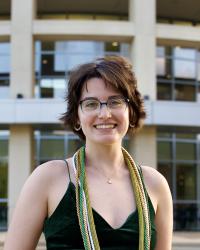
| Maddy KovaleskiI’m a graduate student in Physical Oceanography. My current research is focused on advancing seasonal sea ice breakup modeling, exploring the dynamics of large-scale sea ice fractures and associated floe size distributions. |

| Roy AnI’m an undergraduate student working on understanding frontal formation using high-resolution ocean models and observations. |
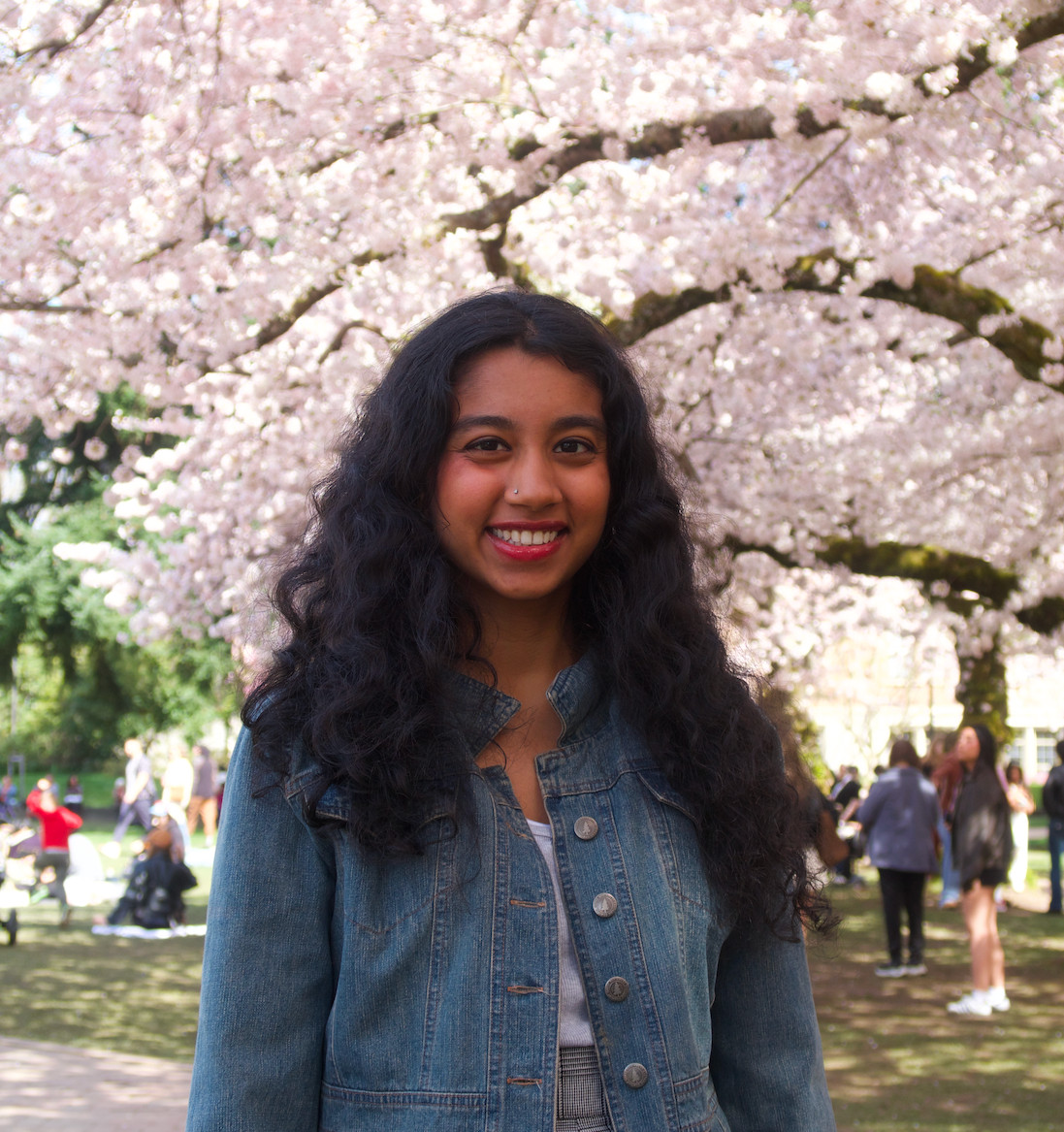
| Shrimayee NarasimhanI'm an undergraduate research assistant applying deep learning techniques to enhance the spatial resolution of a multi-decade eddy observation time series, contributing to more precise analyses of ocean eddies and their role in climate systems. |

| Andrei MedvedevI am a graduate student leveraging deep learning to investigate Atlantic Meridional Overturning Circulation (AMOC) variability by linking subsurface signals to surface observables (e.g., sea-surface temperature, salinity, sea-surface height), with the goal of constraining climate models and improving projections of AMOC evolution. |

| Cody CruzI'm an undergraduate student in Oceanography and Physics investigating the global circulation patterns and beaching probabilities of surface drifters as proxies for plastic waste |
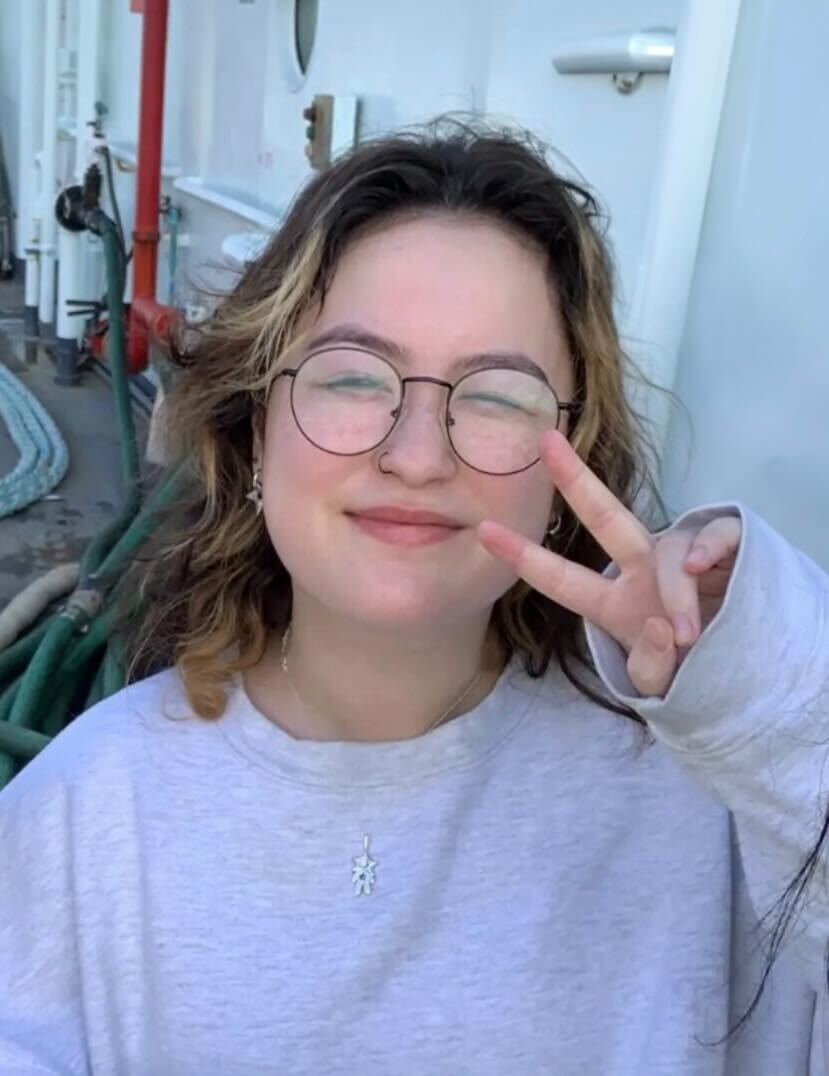
| Kayla RobertsonI'm an undergraduate student in Oceanography working on understanding the connectivity patterns between the global ocean and coastal areas where significant beaching of surface ocean drifters occurs |

| Nilesh SathyanarayananI'm a high school student at Skyline High School in Sammamish, WA. I'm working on various science communication projects within the Ocean Dynamics research group at UW. My latest projects involve sea ice modeling using the floe-scale model SubZero and physics-informed machine learning of quasigeostrophic ocean turbulence. |
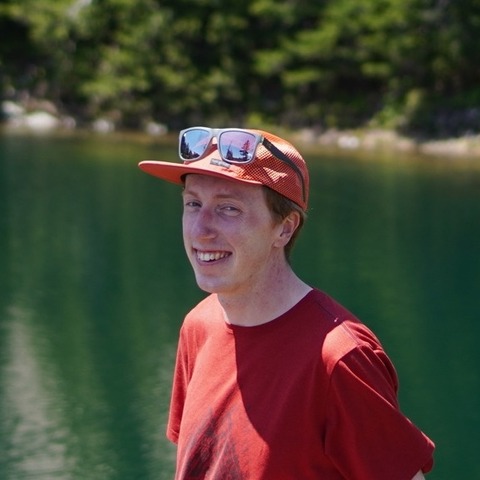
|
Scott Martin [cv][website]I'm a graduate student exploring mesoscale and submesoscale ocean turbulence using deep learning. My research focuses on using deep learning to more accurately reconstruct gridded sea surface height maps from sparse along-track satellite altimeter observations. By synthesizing approaches from physics and deep learning, we hope to learn new lessons about the turbulent dynamics of the upper ocean. |
 |
Brandon Montemuro [cv][website]I'm a research scientist in the Ocean Physics group. My research utilizes applied mathematics to investigate the underlying physics of arctic sea ice. I am working on a sea ice model utilizing a discrete element method to resolve interactions and phenomena at the floe scale. |
 | Robin Chartrand [cv]I'm an undergraduate research assistant developing Python-based GUI for visualization of images and netcdf data and segmentation of oceanographycally-relevant features. |
Former group members: | |
UW graduate students Yang (Kitty) Wang | |
UW postdocs Kalyan Shrestha Brandon Montemuro Channing Prend | |
| UW undergraduate students Robin Chartrand (2025) Kayla Robertson (2025) Cody Cruz (2025) Krista Matuska (2024) Camille Viviani (2023) Ayden van den Berg (2022) Yuna Liu (2022) Lisa Li (2022) Yaoning Yu (2021) Murray Kang (2021) James Kunetz(2020) Snehal Shokeen (2019) | |
| Summer program students
Anna Fisher Lopez (2023 intern at UW, now at Stanford) Dylan Epstein-Gross (2023 HMEI fellow at UW, now at Princeton) Maya Avida (2023 HMEI fellow at UW, now at Princeton) Hugh Shields (2023 HMEI fellow at UW, now at Princeton) Tom George (2018 Caltech SURF, now doing Ph.D. at University College London) Jessica Kenigson (2017 GFD Summer School at WHOI, founder of Kenigson Consulting) Robert Fajber (2017 GFD Summer School at WHOI, now a professor at McGill University) Peiyun Zhu (2016 Caltech SURF, moved on to graduate with a Ph.D. from Stanford University) |
Research
Our group is using Deep Learning to synthesize different satellite observations and develop a global SSH product with unprecedented accuracy.
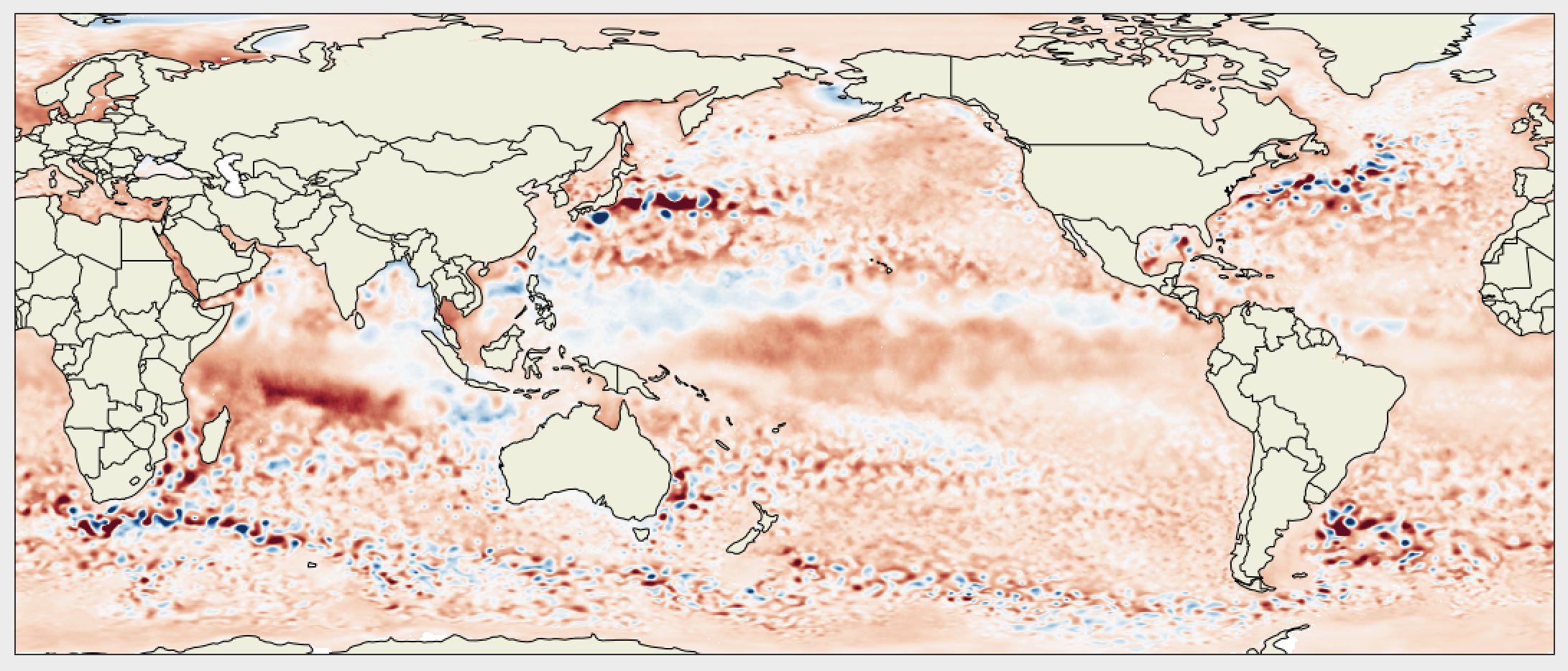
First AI-generated global SSH map. The future is here!
Satellite observations of sea surface height (SSH) are widely used to derive surface ocean currents on a global scale. However, due to gaps in SSH observations, it remains challenging to retrieve the dynamics of rapidly evolving upper-ocean currents. To overcome this limitation, we propose a Deep Learning framework that is based on pattern recognition extracted from SSH observations. Using synthetic data generated from a simplified model of ocean turbulence, we demonstrate that deep learning can accurately estimate both surface and sub-surface ocean currents, significantly outperforming the most commonly used techniques. By providing a proof of concept, our study highlights the strong potential of deep learning for estimating ocean currents from satellite observations.
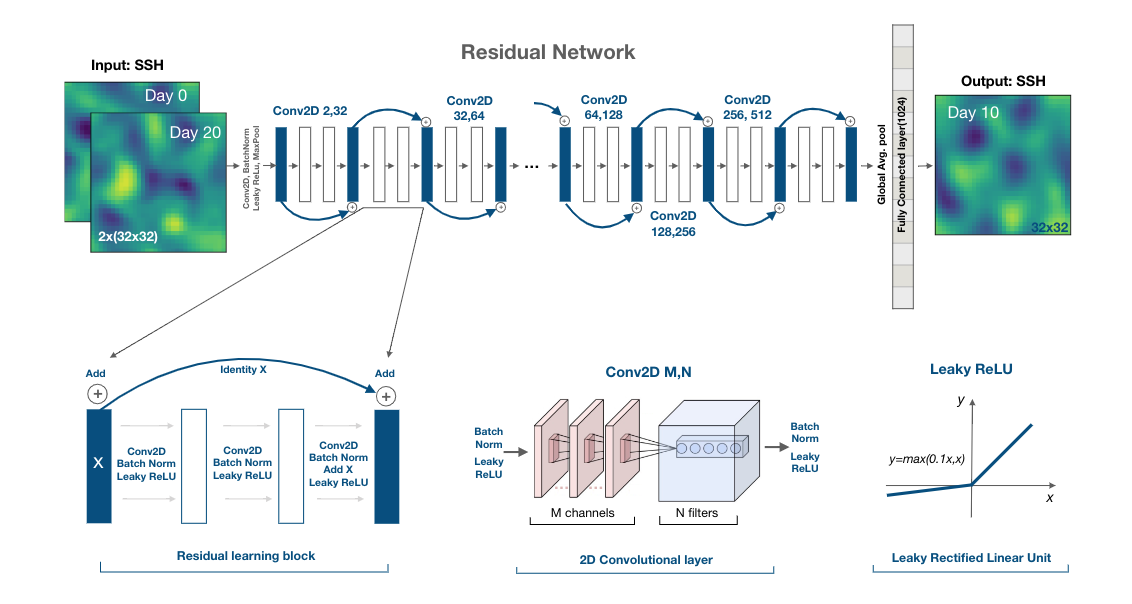
Sea ice dynamics is a topic of continuing debate, particularly at scales of motion that are comparable to sea ice floes. We are developing from scratch a sea ice model that is based on an explicit representation of the floe lifecycle, including the fractures, welding, formation, etc. The goal is to have a model that could bridge the gap between the floe scale and the basic scale sea ice dynamics.
Exploring the role of small islands in sea ice propagation through Nares Strait.
(left) Simulation without the islands. Simulation with the islands (right).
Localized and episodic fluxes due to submesoscale oceanic turbulence play an important role in larger scale dynamics and affect biogeochemical cycles via vertical advection of nutrients. We are exploring submesoscale variability in the Arctic Ocean, particularly in marginal and seasonal ice zones, where active mechanical and thermodynamical eddy interactions with overlying sea ice can affect its growth/melt rates.
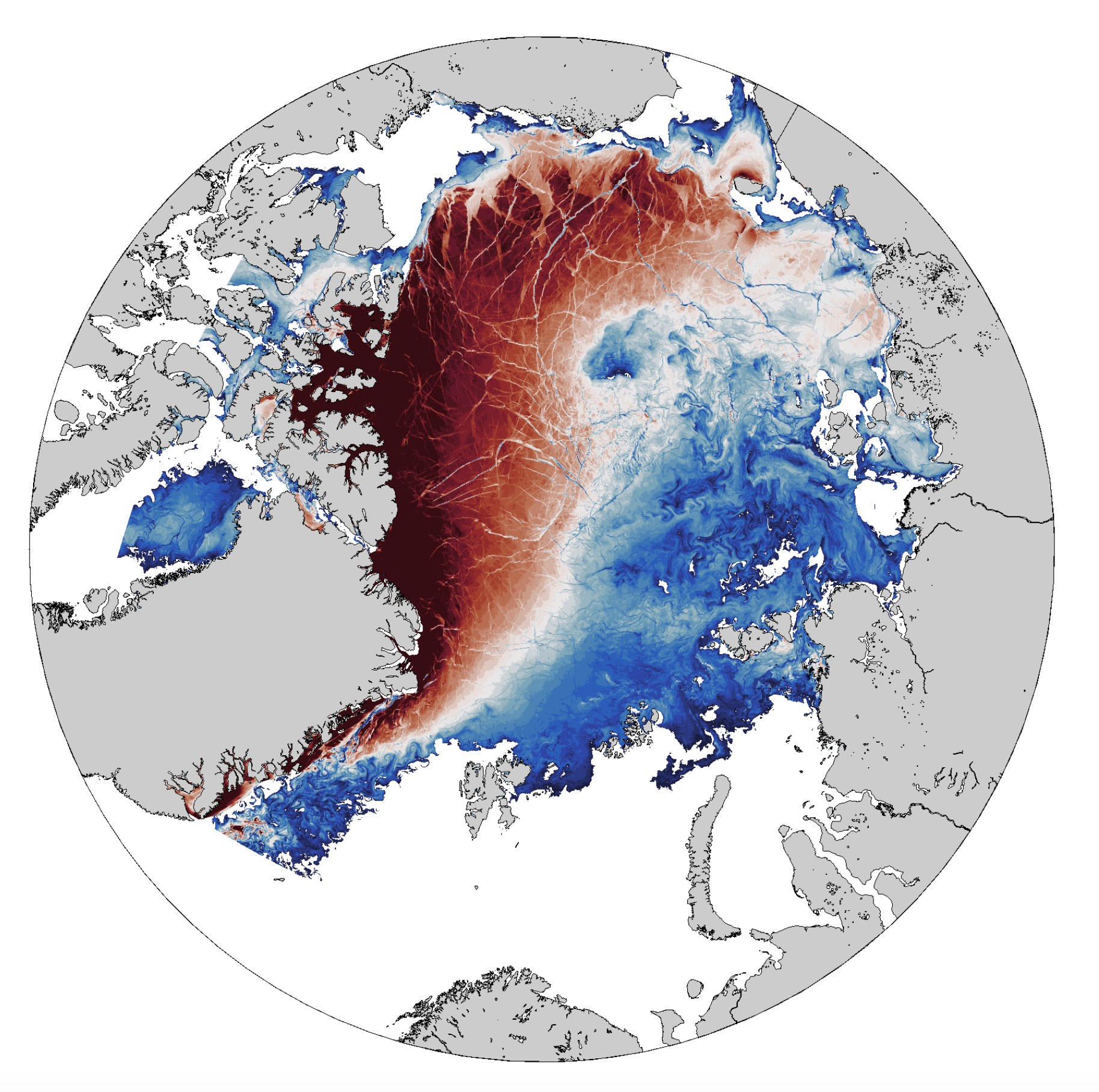
Mesoscale and submesoscale eddies in marginal ice zones in the Arctic Ocean as simulated by the LLC4320 ocean model.

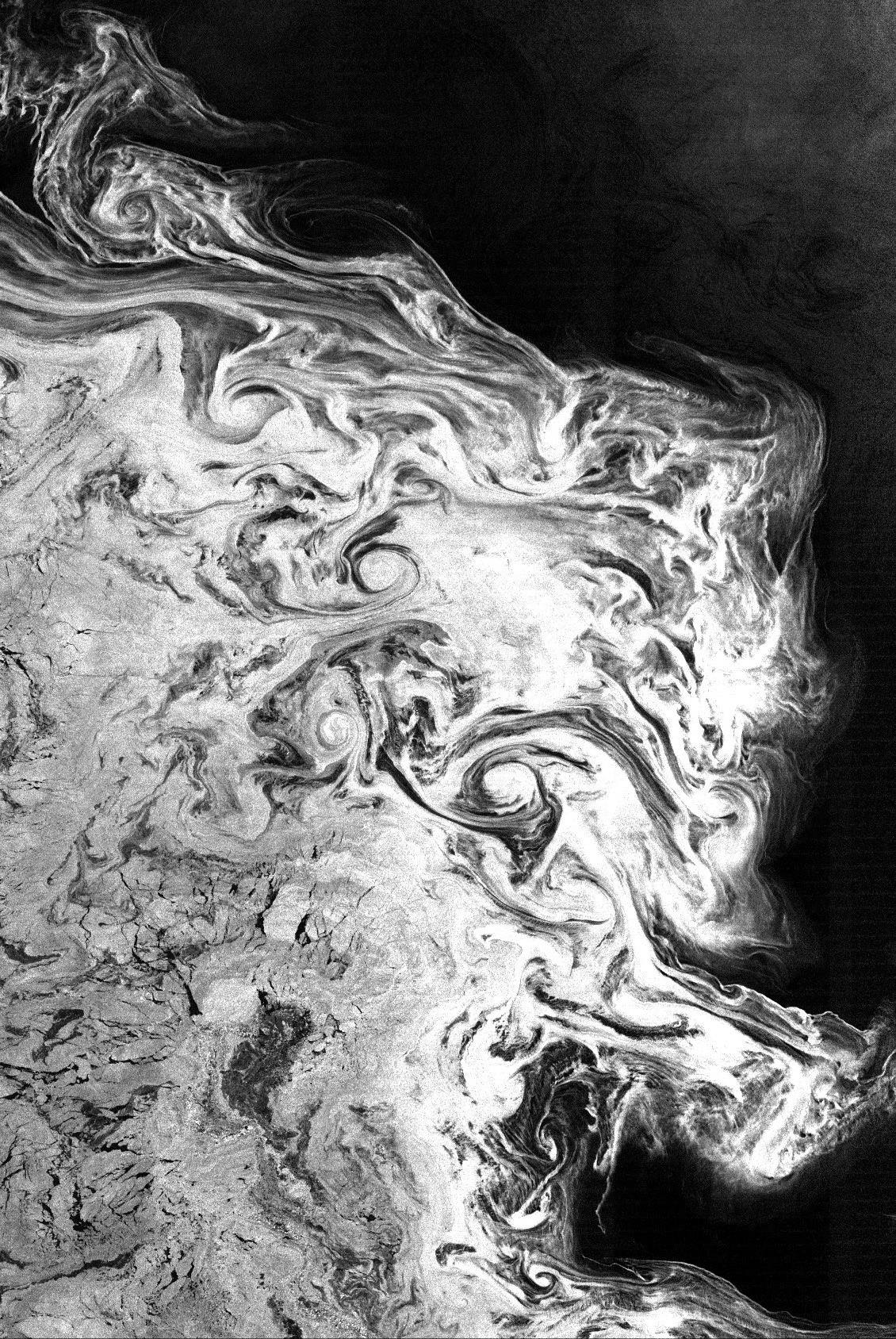
Arctic Ocean stores a large amount of freshwater within the Beaufort Gyre. The freshwater accumulation was linked to changing atmospheric winds, which can cause a release of the accumulated fresh waters with global climate implications. Nonetheless, the basic gyre dynamics are not well understood and it is unclear how much freshwater can be held in under persistent forcing and how quickly it can be released. Combining theory with numerical simulations, we work to explore dominant physical processes governing the FWC dynamics, focusing on the interactions between eddies, mean flow, and sea ice. It is the interplay between these processes that defines the gyre stability and affects its variability.
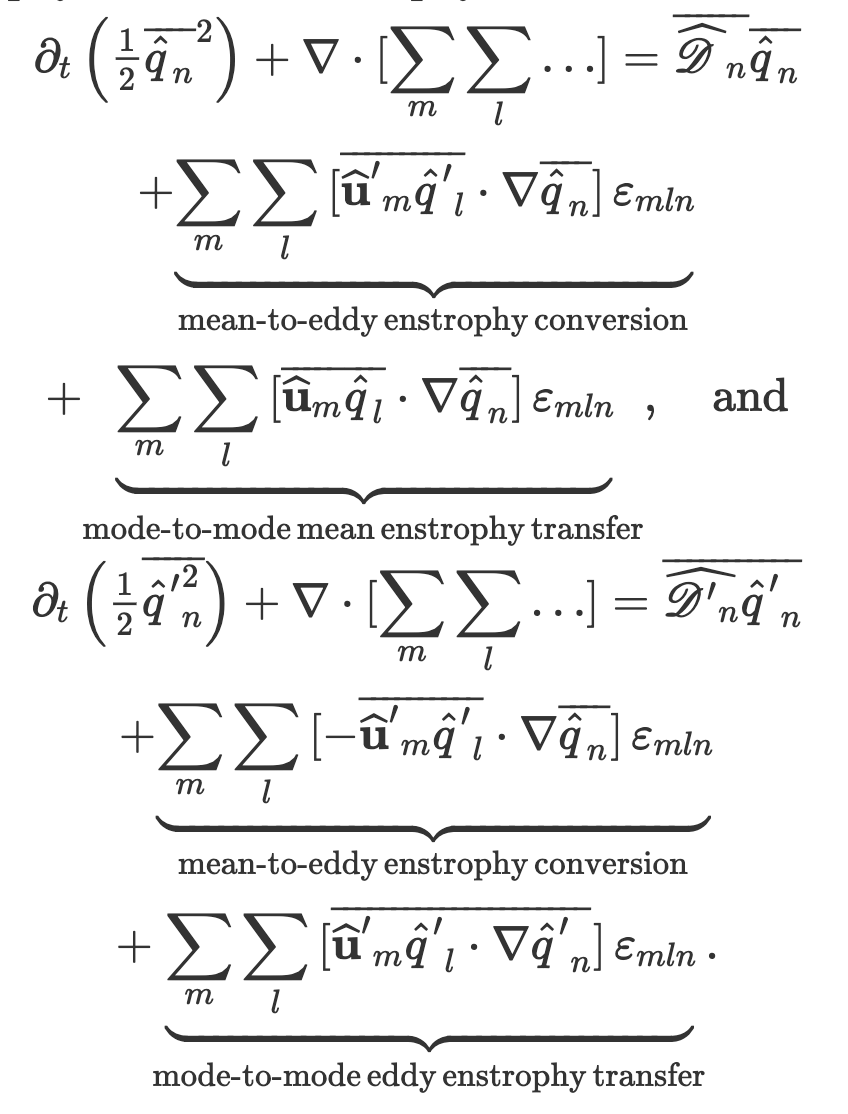

Eddies are commonly observed in the Arctic Ocean and can affect the melting of sea ice due to increased heat fluxes associated with enhanced boundary layer turbulence. However, the nature of mesoscale and submesoscale variability in the Arctic Ocean is not well understood. We use idealized models and high-resolution simulations along with in situ observations to explore the dynamics of outcropping density fronts and identify factors influencing the formation of coherent eddies.

Publications
Kosty, J. A., Zhao, K. X., Stewart, A. L., McCoy, D. E., Bianchi, D., & Manucharyan, G. E. (2025). Marine mammal‐based observations of subsurface‐intensified eddies in the seasonally sea ice‐covered southern ocean.Journal of Geophysical Research: Oceans,130(4), e2024JC021781 Chartrand, Robin, Robert Fajber, and Georgy Manucharyan. "NcCut: A NetCDF Viewer and Transecting Tool.Journal of Open Source Software,10, no. 106 (2025): 7185. Martin, S. A., Manucharyan, G. E., & Klein, P. (2024). Deep learning improves global satellite observations of ocean eddy dynamics.Geophysical Research Letters,51(17), e2024GL110059. Meng, S., Stewart, A. L., & Manucharyan, G. (2024). Circumpolar transport and overturning strength inferred from satellite observables using deep learning in an eddying Southern Ocean channel model. Journal of Advances in Modeling Earth Systems,16(9), e2024MS004262. Vanderborght, E., Demaeyer, J., Manucharyan, G., Moon, W., & Dijkstra, H. A. (2024). Physics of the Eddy Memory Kernel of a Baroclinic Midlatitude Atmosphere.Journal of the Atmospheric Sciences, 81(3), 691-711. Shrestha, K., Manucharyan, G.E. and Nakayama, Y. (2024). Submesoscale variability and basal melting in ice shelf cavities of the Amundsen Sea. Geophysical Research Letters, 51(3), p.e2023GL107029. Prend, C.J., MacGilchrist, G.A., Manucharyan, G.E., Pang, R.Q., Moorman, R., Thompson, A.F., Griffies, S.M., Mazloff, M.R., Talley, L.D. and Gille, S.T., (2024). Ross Gyre variability modulates oceanic heat supply toward the West Antarctic continental shelf. Communications Earth & Environment, 5(1), pp.1-10. Montemuro, B. P., and Manucharyan, G. E. (2023), SubZero: a Discrete Element Sea Ice Model That Simulates Floes as Evolving Concave Polygons, Journal of Open Source Software 8, no. 88, p. 5039. Solodoch, A., Stewart, A. L., Hogg, A. M., and Manucharyan, G.E. (2023), Machine Learning-Derived Inference of the Meridional Overturning Circulation From Satellite-Observable Variables in an Ocean State Estimate. Journal of Advances in Modeling Earth Systems, 15(4). -
Martin, S. A., Manucharyan, G. E., and Klein, P. (2023), Synthesizing Sea Surface Temperature and Satellite Altimetry Observations Using Deep Learning Improves the Accuracy and Resolution of Gridded Sea Surface Height Anomalies. Journal of Advances in Modeling Earth Systems, 15(5), e2022MS003589. -
Dijkstra, H.A., Manucharyan, G. E., and Moon, W. (2022), Eddy memory in weakly nonlinear two-layer quasi-geostrophic ocean flows, European Physical Journal Plus, 137, 1162. -
Manucharyan, G.E. and B.P. Montemuro (2022), SubZero: A Sea Ice Model with an Explicit Representation of the Floe Life Cycle, Journal of Advances in Modeling Earth Systems, 14, e2022MS00324. -
Manucharyan, G.E. and A.L. Stewart (2022), Stirring of interior potential vorticity gradients as a formation mechanism for large subsurface-intensified eddies in the Beaufort Gyre, Journal of Physical Oceanography, 52(12), 3349-3370. -
Shrestha, K. and Manucharyan, G.E. (2022), Parameterization of submesoscale mixed layer restratification under sea ice. Journal of Physical Oceanography, 52(3), pp.419-435. Chen, N., Fu, S. and Manucharyan, G.E. (2022), An efficient and statistically accurate Lagrangian data assimilation algorithm with applications to discrete element sea ice models. Journal of Computational Physics, 455, p.111000. Manucharyan, G.E. and Thompson, A.F. (2022), Heavy footprints of upper-ocean eddies on weakened Arctic sea ice in marginal ice zones. Nature communications , 13(1), pp.1-10. -
Manucharyan, G.E., Lopez-Acosta, R. and Wilhelmus, M.M. (2022). Spinning ice floes reveal intensification of mesoscale eddies in the western Arctic Ocean. Scientific reports, 12(1), pp.1-13. -
Moon, W., Manucharyan, G.E. and Dijkstra, H.A. (2022), Baroclinic instability and large‐scale wave propagation in a planetary‐scale atmosphere, Quarterly Journal of the Royal Meteorological Society, 148(743), pp.809-825. Chen, N., Fu, S. and Manucharyan, G.E. (2021) Lagrangian Data Assimilation and Parameter Estimation of an Idealized Sea Ice Discrete Element Model, Journal of Advances in Modeling Earth Systems, 13, no. 10: e2021MS002513. Moon, W., Manucharyan, G.E. and Dijkstra, H.A. (2021), Eddy memory as an explanation of intraseasonal periodic behaviour in baroclinic eddies. Quarterly Journal of the Royal Meteorological Society, 147(737), pp.2395-2408. -
Kubryakov A.A., Kozlov I.E., & Manucharyan G.E. (2021) Large mesoscale eddies in the Western Arctic Ocean from satellite altimetry measurements, Journal of Geophysical Research: Oceans,126(5), e2020JC016670. -
George, T., Manucharyan, G.E., & Thompson, A.F. (2021), Deep learning to infer eddy heat fluxes from sea surface height patterns of mesoscale turbulence, Nature Communications, 12, 800. -
Manucharyan, G.E., Siegelman, L., & Klein, P. (2021), A Deep Learning Approach to Spatiotemporal Sea Surface Height Interpolation and Estimation of Deep Currents in Geostrophic Ocean Turbulence, Journal of Advances in Modeling Earth Systems, 13, e2019MS001965. http://doi.org/10.1029/2019MS001965. EarthArxiv. -
Kenigson, J. S., Gelderloos, R., & Manucharyan, G. E. (2021). Vertical Structure of the Beaufort Gyre Halocline and the Crucial Role of the Depth-Dependent Eddy Diffusivity, Journal of Physical Oceanography, 51(3), pp.845-860. -
Kozlov, I. E., Plotnikov, E. V., & Manucharyan, G. E. (2020). Brief Communication: Mesoscale and submesoscale dynamics in the marginal ice zone from sequential synthetic aperture radar observations. The Cryosphere , 14(9), 2941-2947. -
Armitage, T.W.K., Manucharyan, G.E., Petty A.A., et al. (2020), Enhanced eddy activity in the Beaufort Gyre in response to sea ice loss, Nature Communications,11, 761. -
Nakayama, Y., Manucharyan, G.E., et al. (2019), Pathways of ocean heat towards Pine Island and Thwaites grounding lines, Scientific Reports , Nov 22, 9(1):1-9. -
Proshutinsky, A., et al. including Manucharyan, G.E. (2019), Analysis of the Beaufort Gyre Freshwater Content in 2003--2018, Journal of Geophysical Research: Oceans, 124. -
Kozlov, I.E., Artamonova, A.V., Manucharyan, G.E. and Kubryakov, A.A. (2019), Eddies in the Western Arctic Ocean from spaceborne SAR observations over open ocean and marginal ice zones, Journal of Geophysical Research: Ocean, 124, 6601--6616. -
Manucharyan, G.E. and Isachsen P.E. (2019), Critical role of continental slopes in halocline and eddy dynamics of the Beaufort Gyre, Journal of Geophysical Research: Oceans, 124, no. 4. -
Zhao, M., Timmermans, M.-L., Krishfield, R., & Manucharyan, G.E. (2018), Partitioning of kinetic energy in the Arctic Ocean's Beaufort Gyre. Journal of Geophysical Research: Oceans, 123, 4806--4819. -
Ardhuin, F. et al. including Manucharyan, G.E. (2018), Measuring currents, ice drift, and waves from space: the Sea surface KInematics Multiscale monitoring (SKIM) concept, Ocean Science , 14.3, 337--354. -
Manucharyan G.E. & A.F. Thompson (2017), Submesoscale sea ice-ocean interactions in marginal ice zones, Journal of Geophysical Research: Oceans , 122, 9455--9475. -
Zhu P., Manucharyan, G.E., Thompson, A.F., Goodman, J.C. & Vance, S.D. (2017), Freshwater layer beneath Europa's ice shell, Geophysical Research Letters , 44, 5969--5977. -
Manucharyan G.E., A.F. Thompson, and M.A. Spall (2017), Eddy-Memory mode of multi-decadal variability in residual-mean ocean circulations with application to the Beaufort Gyre, Journal of Physical Oceanography -
Manucharyan G.E., M.A. Spall, and A.F. Thompson (2016), A theory of the wind-driven Beaufort Gyre variability, Journal of Physical Oceanography -
Manucharyan G.E. & M.A. Spall (2016), Wind-driven freshwater buildup and release in the Beaufort Gyre constrained by mesoscale eddies, Geophysical Research Letters, 43(1), pp 273-282. Manucharyan G.E. & C.P. Caulfield (2015), Entrainment and mixed-layer dynamics of a surface-stress-driven stratified fluid, Journal of Fluid Mechanics, 765, pp 653-667. -
Manucharyan G.E. & A.V. Fedorov (2014), Robust ENSO across a wide range of climates, Journal of Climate, 27, 5836-5850. -
Manucharyan G.E., W. Moon, F. Sevellec, A.J. Wells, J.-Q. Zhong, & J.S. Wettlaufer (2014), Steady turbulent density currents on a slope in a rotating fluid, Journal of Fluid Mechanics, 746, pp 405-436. -
Manucharyan G.E. & M.-L. Timmermans (2013), Generation and separation of mesoscale eddies from surface ocean fronts, Journal of Physical Oceanography, 43, 2545-2562. Manucharyan G.E., C.M. Brierley, & A.V. Fedorov (2011), Climate impacts of intermittent upper ocean mixing induced by tropical cyclones, Journal of Geophysical Research, 116, C11038. -
Manucharyan G.E. (2010), Dynamics of the Mixed Layers in Stratified Shear Flows, WHOI GFD Summer School, Ann. Proc. Vol. 2010, pp 240-259. Manucharyan G.E. (2014) The Role of Upper-Ocean Mixing in Large-Scale Ocean and Climate Dynamics, PhD Thesis, Yale University, 251 pp.
Not peer-reviewed:
Contact Information
Email: gmanuch@uw.edu
Phone: (206) 221-4879
Office: OSB 317,
School of Oceanography,
University of Washington.
Phone: (206) 221-4879
Office: OSB 317,
School of Oceanography,
University of Washington.
Mailing Address:
Box 355351,
School of Oceanography,
University of Washington,
Seattle, WA, 98115.
Box 355351,
School of Oceanography,
University of Washington,
Seattle, WA, 98115.